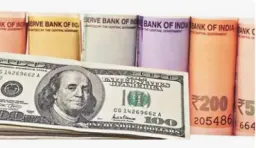IMF May Reclassify India’s Forex Regime: What It Means

IMF Looks to Reclassify India’s Forex Framework What It Means
⚙️ What’s Happening
The IMF is reportedly preparing to revise its classification of India’s exchange-rate regime possibly describing it as a “crawling peg” or managed regime rather than a free-floating currency.
The change comes after recent periods of renewed volatility in the rupee and observable intervention by the RBI in foreign-exchange markets.
Under a crawling-peg framework, the rupee would still be allowed to adjust gradually, but central-bank intervention would remain a key driver marking a de facto shift from a purely market-driven float.
If implemented, this classification will likely appear in the IMF’s upcoming 2025 Article IV consultation report for India.
📌 Background: What Has Changed in Recent Years
In December 2023, the IMF reclassified India’s regime from “floating” to “stabilised arrangement,” citing broad periods of low volatility a result of consistent currency-market interventions.
Analysts have pointed out that during 2022–2024, rupee-USD volatility fell significantly, largely because the RBI bought or sold dollars to smooth fluctuations.
But recent months have seen more frequent swings in the rupee’s value, particularly against the dollar, possibly driven by global economic turbulence and shifting capital flows.
This fresh volatility may have prompted the IMF to rethink its prior classification.
🧮 Why It Matters - Implications of a New Classification
Changing the official label of India’s forex regime carries several potential consequences:
• Transparency and Global Perception
An IMF classification signals to global investors and financial institutions how a country manages its exchange rate. Shifting to a “crawling-peg / managed” tag may raise questions about currency flexibility and openness, affecting foreign capital flows and investment sentiment.
• Impact on Exporters and Importers
For exporters, a stable rupee-if maintained through intervention-can offer predictability. But if the peg slowly depreciates, it could impact input costs for import-heavy companies. Importers may face volatility and increased hedging costs.
• Monetary Policy vs FX Management Tradeoff
As per the “Impossible Trinity” (or “Trilemma”) in international finance, a country cannot simultaneously have free capital flows, an independent monetary policy, and a fixed exchange rate.
If India leans toward a managed exchange rate, the RBI may have less freedom to use interest rates independently - potentially constraining monetary-policy responses to inflation or growth shocks.
• Investor Behavior & Risk Perception
Currency moves influence inflation, capital flows, debt servicing costs (for borrowers in foreign-denominated debt), and overall market sentiment. Frequent interventions or managed exchange-rate perception may increase risk premia.
🔎 What’s Driving the Change
Several recent developments underpin the likely reclassification:
Rupee volatility: The rupee has seen sharper swings in value lately due to global headwinds and capital-flow reversals.
Intervention by RBI: The central bank appears to have intervened to smooth extreme swings, indicating that the currency isn’t purely market-led.
Global forex pressure & capital flows: External shocks, global interest-rate shifts, and changes in foreign investor behavior put pressure on emerging-markets currencies ; including the rupee.
✅ What India and Investors Should Watch For
Clarity on interventions : Transparency around when and why RBI intervenes to help assess future currency path.
Hedging strategies : For exporters/importers or companies with foreign-currency exposure, proactive hedging can reduce risk.
Interest-rate and inflation interplay : Watch how currency policy and monetary policy evolve together, especially if global macro conditions shift.
Impact on capital flows : Reclassification might affect foreign institutional investor (FII) inflows; diversification and caution may matter more.
Long-term external sector stance : Forex reserves, current account balance and capital-account flows remain relevant indicators.
📝 Final Word
The anticipated move by the IMF to reclassify India’s forex framework is not just a technical label change. It reflects how the economy - under global pressures, forex volatility, and shifting capital flows - is navigating the delicate balance between currency stability and market flexibility.
For global investors, corporations and Indian policy-watchers alike, this shift signals a moment to reassess assumptions about the rupee, monetary policy, and external risk. For domestic stakeholders, it reinforces the need for prudent forex management, insightful hedging, and readiness to adapt to a more managed-currency world.









